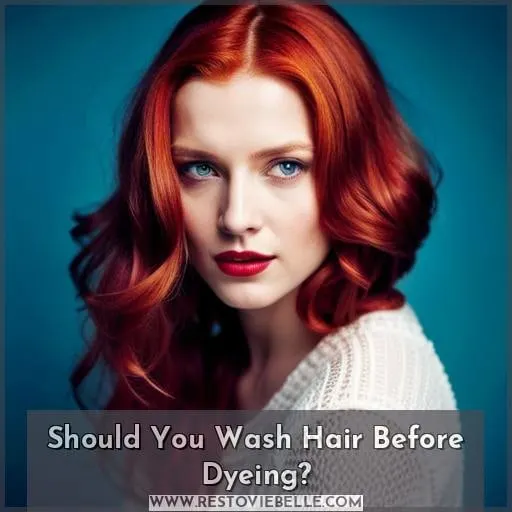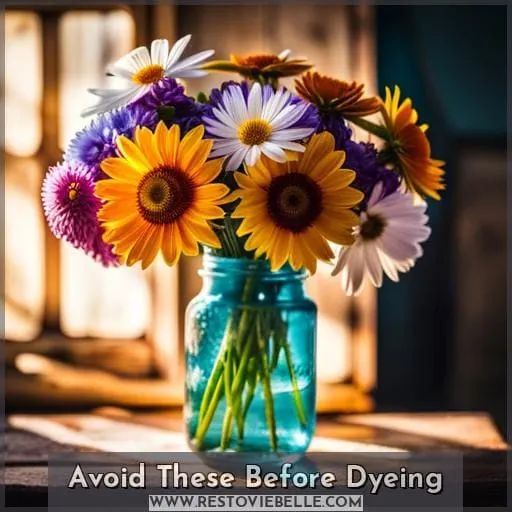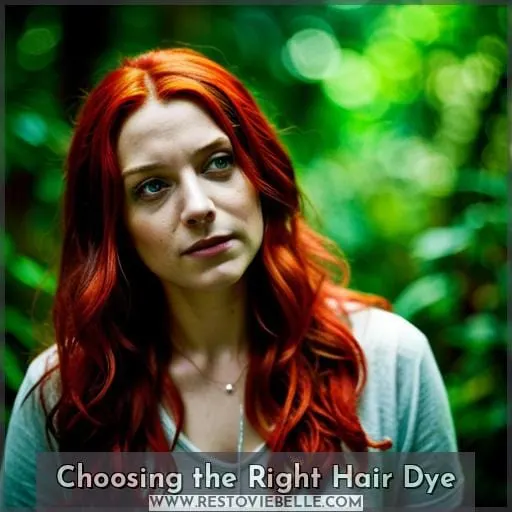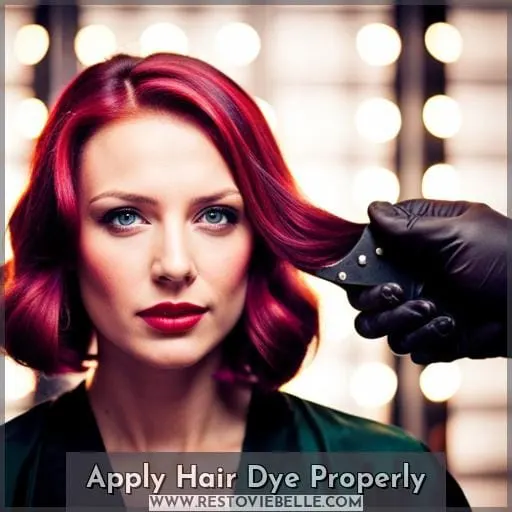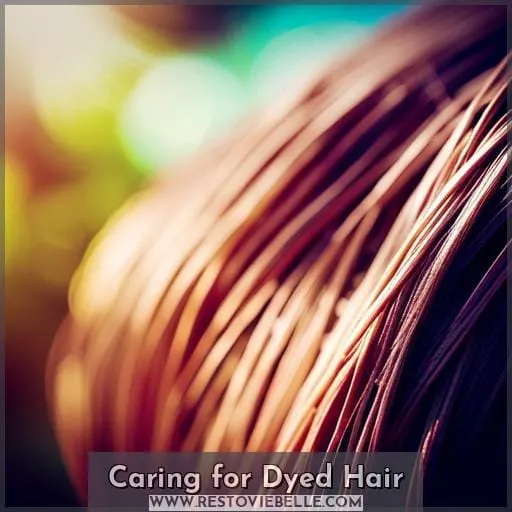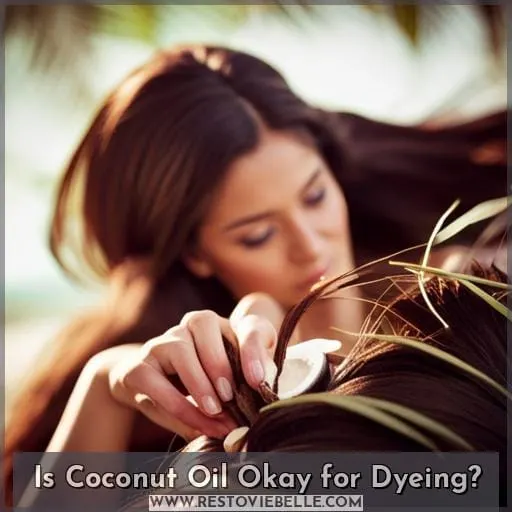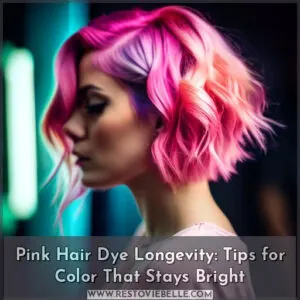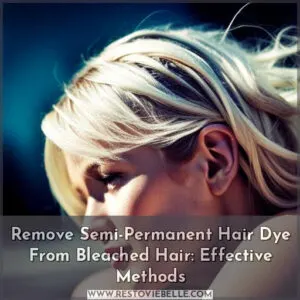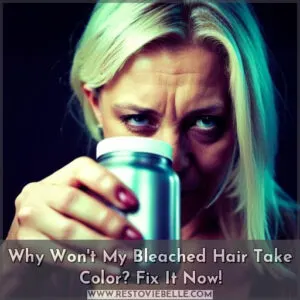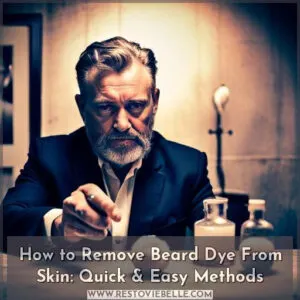This site is supported by our readers. We may earn a commission, at no cost to you, if you purchase through links.
 Is greasy hair crampin your style? Listen, doll – We’ve all been there. You look in the mirror, your locks are limp and stringy, but that gray is peekin through and it’s screamin for a refresh.
Is greasy hair crampin your style? Listen, doll – We’ve all been there. You look in the mirror, your locks are limp and stringy, but that gray is peekin through and it’s screamin for a refresh.
Don’t sweat it! Sure, sudsing up before coloring is usually best to get that clean canvas. But the truth? You can totally dye those dirty dos. Now I’m not sayin you should make a habit of it, but in a pinch? It can be done.
Here’s the deal – slick strands can act as a barrier between the dye and your follicles. So be sure to really work that color in, maybe even leave it on a few extra minutes. And go for ammonia-free if you’re feelin dry or sensitive. Worst case, it may fade faster.
Now grab that box of dye and don’t let a greasy mop stop you from rockin that fresh do.
Table Of Contents
Key Takeaways
- Remove styling products and conditioners before dyeing for the best color results.
- Pre-treat hair with coconut oil instead of leave-in conditioners when coloring.
- Apply dye thoroughly on greasy hair and leave on longer if needed.
- Avoid washing hair too often after coloring to help seal in and maintain vibrancy.
Should You Wash Hair Before Dyeing?
You’ll want to thoroughly cleanse your hair before coloring for the best results, so grab a clarifying shampoo to deeply wash away any buildup. Though some believe oily hair helps the dye absorb better, it’s ideal to start with freshly shampooed hair when coloring for maximum vibrancy.
Prep your hair and scalp the day before dyeing by cleansing away dirt, sweat, and product residue that could react with the chemicals. Limit shampoo to the scalp to avoid over-drying fragile ends. Don’t scrub too aggressively to prevent irritation.
Water down shampoo for the final rinse and finish with a nourishing conditioner to prime hair.
When it’s time to dye, forgo leave-in treatments and stylers so the color has a clean canvas.
Can You Dye Greasy Hair?
You can dye slightly greasy hair as the oils may help protect your scalp from irritation during the process. With greasy hair, concentrate the dye mid-lengths to ends to avoid an overly dark root result.
Clarifying shampoos pre-dye can remove product buildup without stripping oils. Apply Vaseline along the hairline first to prevent staining, then mist hair lightly before applying dye. The oils act as a barrier for sensitive scalps and lubricate the hair shaft for even saturation.
For permanent color, greasy hair takes longer to process so extend your timing, applying sparingly at the root area. With semi/demi-permanent dyes, oily hair won’t affect the results as much. Focus on nourishing masks post-dye to replenish moisture and shine.
Avoid These Before Dyeing
Don’t keep leave-in conditioner or styling products in when coloring your locks. Product residue can create an invisible barrier, preventing dye from penetrating evenly. Pre-dye preparations mean rinsing away anything on your strands. Leave-in conditioners and hair masks should be washed out before applying color for optimal results.
Henna hair dye in particular needs a clean canvas. Any styling products left on the hair shaft will cause uneven dye deposit. For hair that’s nourished yet ready to transform, do a final sulfate-free shampoo before your fresh hue.
Then change your color after henna or experiment with vivid semi-permanents, no residue or barriers. Your colorist can’t wait to see that glossy, healthy hair accepting the new pigment beautifully.
Choosing the Right Hair Dye
When considering semi-permanent versus demi-permanent dyes, it’s crucial to understand the difference. Semi-permanent rinses away after 10 shampoos and contains no peroxide or ammonia, while demi-permanent fades over 25 washes, may change your tone slightly, and uses a low level of peroxide.
The key differences to note are that semi-permanent color washes out quickly and does not lighten hair, while demi-permanent leaves a subtle, lasting tint and lightens hair slightly due to its low peroxide content.
Both options are gentler on hair than permanent dye. When deciding between the two, consider how long you want the color to last and whether you want to lighten your strands a bit.
Semi Versus Demi-Permanent Dyes
Consider your commitment before choosing between semi-permanent dyes that rinse away after 10 washes or demi-permanent dyes that fade over 25 washes. Semi-permanent hair colors without peroxide or ammonia rinse out after 10 hair washes.
Demi-permanent formulas with low peroxide subtly shift tone over 25 shampoos. Both semi and demi-permanent at-home options allow for temporary hair color experiments without drastic permanent changes.
– Permanent Dye Considerations
You’d absolutely alter your hair with ammonia and peroxide if going permanent. Thoroughly prep that mane to accept the permanent color and ensure a flawless transformation. Any left-in products could block color absorption so wash them out before dyeing.
Ammonia lifts your hair’s cuticle for total penetration. The peroxide radically lightens so you’ll get dramatic, long-lasting color changes.
– Matching Natural Hair Color
Nailing your natural shade is challenging; try samples first.
Your hue has depth. Shades interplay uniquely, influenced by undertones. Test adjacent colors on strands. Henna stains underlying pigment, so plan removal before dyeing. Conditioner coats; clarify fully.
Oils aid but can alter color. For true color, strip hair gently pre-dye. Seek permanent shades with gray blending.
Apply Hair Dye Properly
A whopping 80% of women fail to rinse leave-in conditioner from their locks before dyeing, which can weaken the color results by up to 25%.
- Clarify your hair with a deep cleansing shampoo to remove any products. This preps your strands.
- Brush out any leave-in treatments thoroughly. Trapped conditioners dilute dye.
- Shampoo a second time if needed to completely remove residue. Squeaky clean hair accepts color best.
After rinsing, towel blot damp hair before applying dye. Avoid rubbing, be gentle.
Properly prepping hair by removing styling products is optimal for results. Carefully applying dye from roots to ends and following all label instructions will give you vibrant, lasting color that you’ll love.
Caring for Dyed Hair
If you dyed your hair, maintaining the color starts now. Use sulfate-free shampoos and conditioners to help extend the life of the dye. Treat your strands to nourishing hair masks weekly to keep your hair feeling soft.
Limit heat styling to maintain that fresh-from-the-salon look for as long as possible. Varying your hair care routine helps lock in the new color and keeps your strands looking healthy.
Sulfate-Free Products
Grab your sulfate-free shampoos and conditioners to lock in that gorgeous new color. They won’t strip your color like traditional formulas do. Sulfate-free cleansers maintain moisture, protect fresh dye jobs and promote long-lasting vibrancy.
My favorites are Pureology Hydrate Shampoo and Conditioner; the coconut oil in them keeps your scalp happy during processing. Avoid alcohol-based styling products and embrace air drying instead – your hair will stay hydrated and dazzling this way.
Hair Masks
Invest in a hydrating hair mask to maintain moisture after coloring your locks.
- Opt for formulas with plant extracts and oils like argan or olive.
- Apply generously to damp strands after shampooing.
- Allow the mask to penetrate for 10-15 minutes before rinsing thoroughly.
- Use a hair mask weekly for added conditioning and to boost shine.
Hair masks replenish parched, color-treated hair. Schedule a weekly deep conditioning treatment to revive lackluster locks and boost vibrancy between salon visits.
Limit Heat Styling
You’re better off letting your colored tresses air-dry to keep the vibrancy. Limiting heat tool usage on fresh color is key for longevity. Allow your new hue time to oxidize fully before introducing hot styling. Three days post-dye, incorporate a heat protectant when necessitating the blowdryer or iron.
Products with natural oils defend dyed strands while styling. Opt for minimal hot tool use, embracing your locks au naturel.
How Long to Wait Before Washing Dyed Hair?
You’d do best to avoid leave-in conditioners before coloring.
After dyeing your hair, it’s crucial to wait 3-4 days before washing it. This allows the cuticles to close and seal in the color.
Here are 5 tips for post-dye haircare:
- Use cool or lukewarm water only when rinsing. Hot water opens cuticles, releasing dye molecules.
- Opt for a sulfate-free, color-safe shampoo and conditioner. Sulfates strip color.
- Deep condition 1-2 times per week to hydrate strands and lock in vibrancy.
- Limit washing to 2-3 times per week to maintain color integrity.
- Avoid chlorine, sun exposure, and heat styling which can fade color.
Following these rules allows the dye to fully saturate the cortex for maximized color payoff and longevity. Proper at-home techniques combined with professional salon coloring provides optimal results.
Can You Dye With Leave-in Conditioner In?
Rinse out that leave-in conditioner before coloring your locks. Leave-in conditioners and masks create a barrier that blocks hair dye from properly penetrating strands. This can lead to uneven coloring results. For best saturation, thoroughly wash products from your hair 12-24 hours pre-dye.
Then apply a conditioning treatment immediately before coloring for nourishment without interference. Some leave-ins designed for color-treated hair can be left in. But when in doubt, rinse it out.
Here’s a quick reference for common hair products and dyeing:
| Compatible | Use Caution |
|---|---|
| Coconut oil | Argan oil |
| Rosemary oil | Leave-in conditioners |
| Clarifying shampoos | Hair masks |
| Sulfate-free shampoos |
When preparing your canvas for fresh color, remember – less is more. Limit products so dye can work its magic for sensational, head-turning results.
Is Coconut Oil Okay for Dyeing?
You can dye worry-free with pure coconut oil on your strands. Before coloring, massage organic virgin coconut oil into your dry hair and let sit for 30 minutes.
Coconut oil makes an excellent pre-dye treatment since it penetrates the hair cuticle, providing nourishment and slip that helps the dye glide on smoothly. Leave-in conditioners can coat the hair shaft and make it difficult for color to absorb evenly.
But coconut oil, with its smaller molecules, conditions hair while still allowing maximal dye interaction.
For optimal results, shampoo out the coconut oil just before applying your formula. Your hair will feel soft and ready to accept vivid, even color. Healthy, nourished hair always takes to dye optimally.
Conclusion
Did you know that over 50 percent of women admit to not washing their hair as often as they should before coloring? While it may seem convenient to slap some dye on greasy locks, you’re much better off starting with clean hair.
Buildup from hair products and oils can create an invisible barrier, preventing the color from penetrating evenly. Do your hair a favor – shampoo away dirt, oils, and product before coloring for vibrant, even results.
With just a little prep, you’ll walk out of the salon with head-turning color that lasts.

